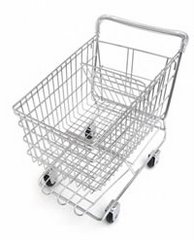I managed to find the layout of my local supermarket back at home:

This layout is typical of most Sainsbury’s stores. Foods are grouped in specific areas and positioned based upon how the store can get their goods onto the shelves. For example, although bread is a basic and frequently bought product, its position is furthest from the entrance where the bakery is located. It could also be positioned in this way to intentionally draw attention away from the shopper’s main goal and towards other products, generating impulse buys.
Supermarkets deliver a variety of products in a reasonably compact way. This is to ensure they meet the needs of as many shoppers as possible. However, this results in a large number of aisles and possibly a large number of products which are irrelevant to that particular shop. Elderly people, like Bob may not be agile enough to dodge through and navigate these cramped aisles at busy times. Also, the large array of products may confuse and therefore create frustration during the whole shopping experience.
With these two points considered, it could be suggested that the organisation of Bob’s goals in a supermarket is not user-centric but rather organised based on the operation and marketing directive of the supermarket itself. There is compromise between what the user needs and what the supermarket wants. It is mainly based on the constraints of the technology supermarkets use to deliver their products to customers and the objective to capture as many of these customers as possible to remain competitive.

No comments:
Post a Comment